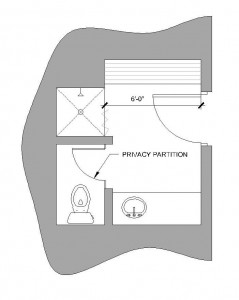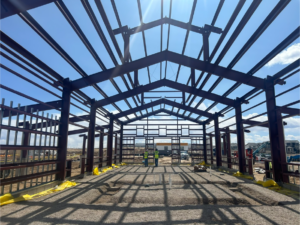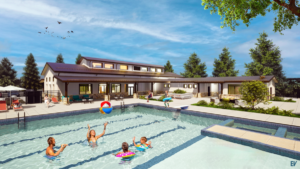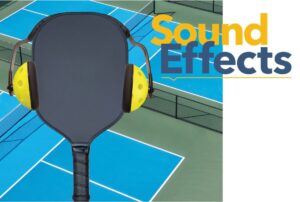One of the most important functions of recreation center cabanas in family locker rooms is providing a convenient place for users of all physical ability levels to change in comfort and privacy. As the recreation center cabana concept has become more common, the diversity of target users has increased and the types and arrangements of fixtures has evolved as well. Cabanas now are often larger and better designed to not only accommodate wheelchair users but families and seniors also. Standard clearances and adjacencies are of course observed, but there are other factors for an architect to consider:
The Bench – An accessible bench is required by code for the rec center cabana to be considered a changing room or part of a locker room, and benches of this kind are often misinterpreted. The bench is required to be 20-24 inches deep and 42 inches long minimum, and is required to allow a parallel approach on a SHORT end of the bench. This means that a wheelchair user should be able to position themselves with their back to the wall and slide onto the bench in a manner similar to how they would move onto the retractable seat in a shower. Also, consider using a longer bench (up to 6 feet) if you have the room. Not all of your disabled guests need a wheelchair! For your guests which need assistance getting dressed, a place to lie down fully can be a big help. If you are concerned about using up too much space, make one “deluxe” room and minimize the rest…your users will remember which one it is!
Door swing – Swinging a door out of a room is a common trick when having trouble with required clearances in the room, but in a high-traffic area like a family locker room it is often inadvisable to allow a door to swing out for fear of hitting someone. Try keeping all plumbing fixtures on the wall opposite the cabana door to allow the maximum door maneuverability.
Toilet partition – The biggest eater of space in any accessible area is the turning radius. This can be exacerbated by the desire to have an individual toilet partition in your cabana which allows one family member (a child, for example) to use the toilet with privacy while others use the shower or wash their hands. If you have several cabanas and space is tight, consider using the toilet partition in only the non-accessible rooms, and you’ll find there is greater flexibility and convenience for your disabled users, who frequently use the room solo.












